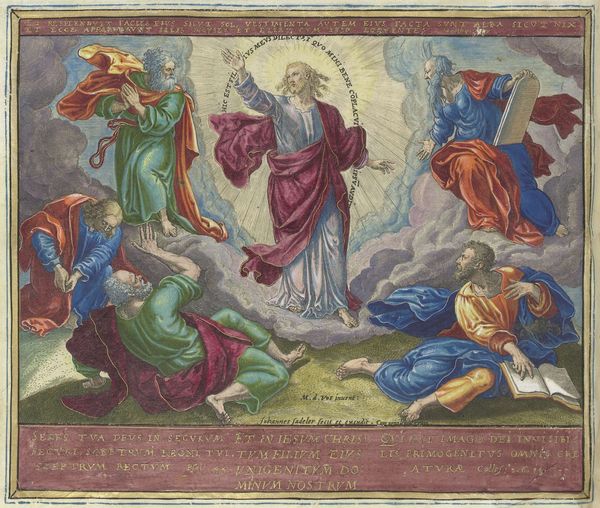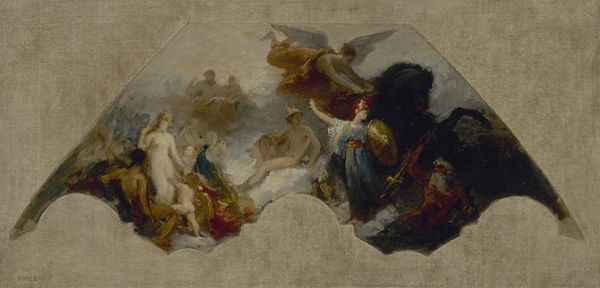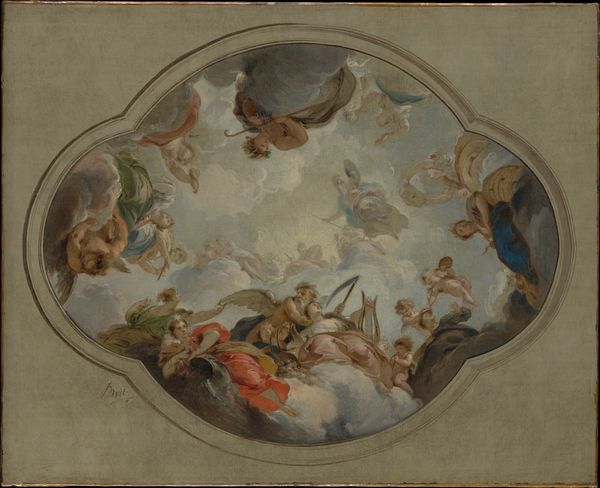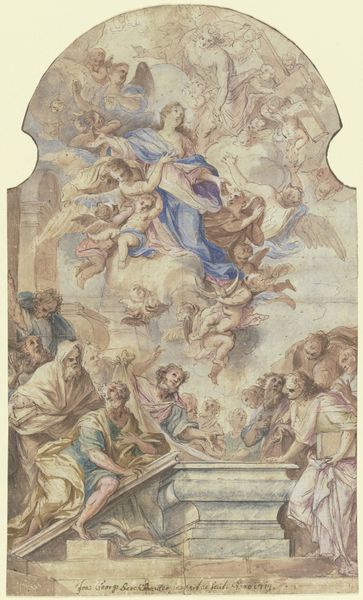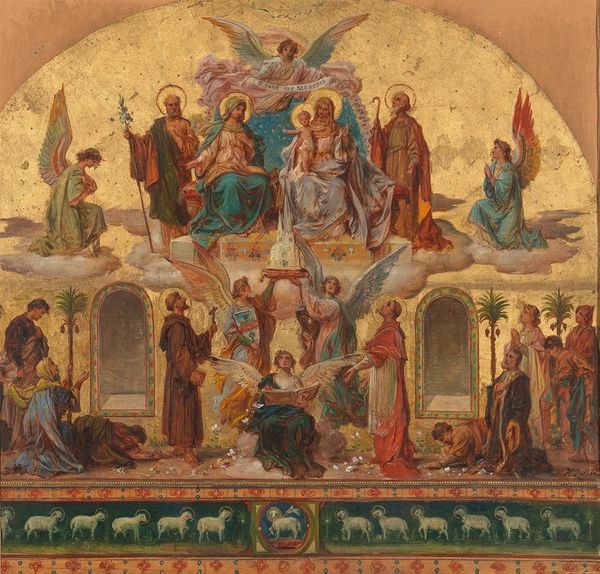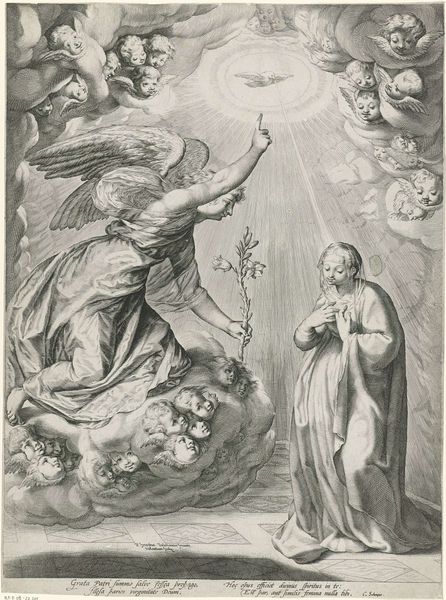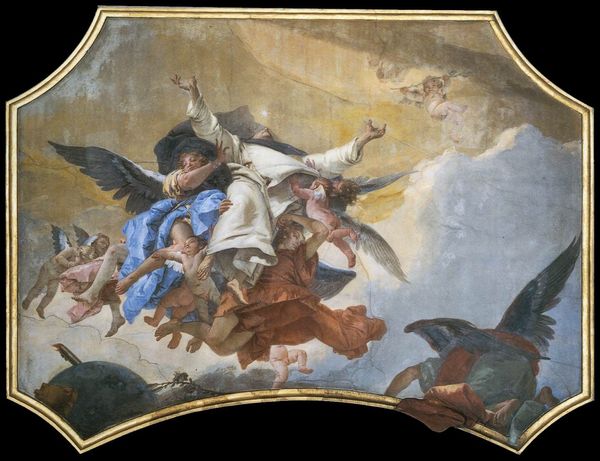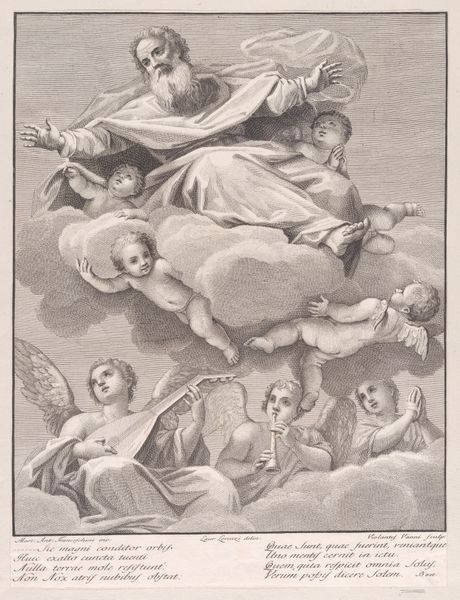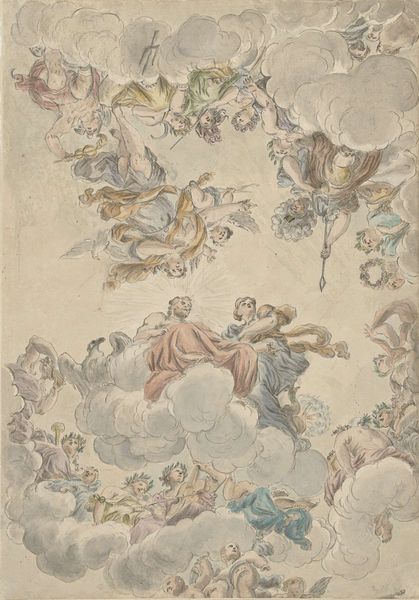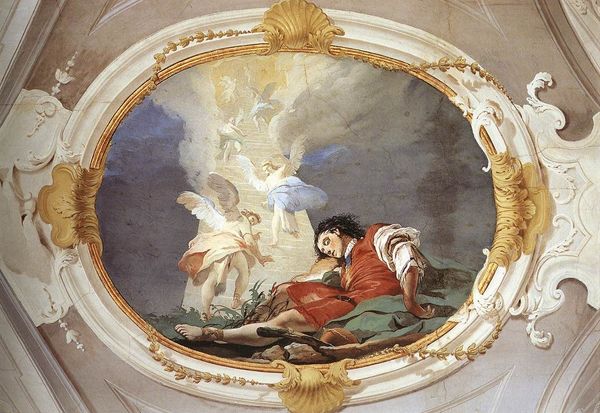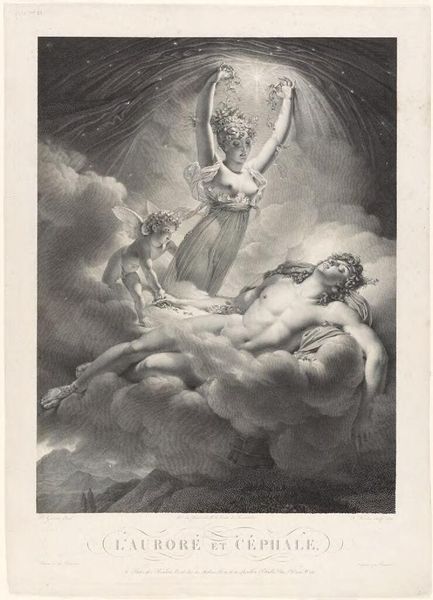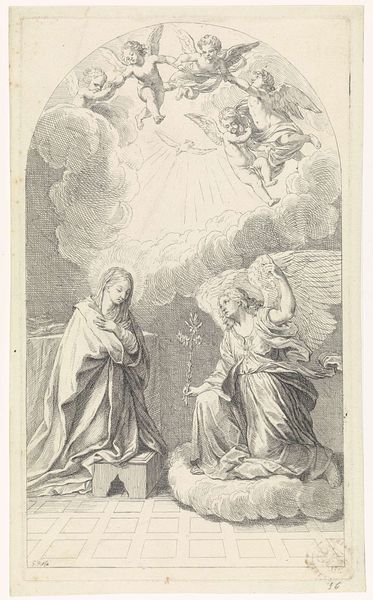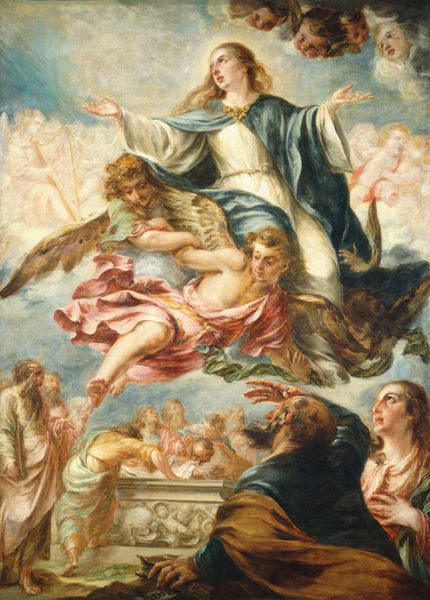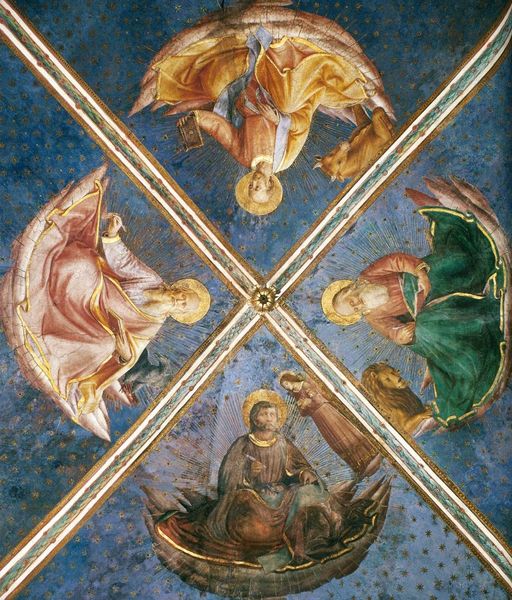
painting, watercolor
#
water colours
#
painting
#
figuration
#
watercolor
#
symbolism
#
history-painting
Copyright: Public Domain: Artvee
Curator: Welcome. Before us is "The Holy Trinity," a painting rendered in watercolor by Jozef Hanula in 1902. Editor: The colors! The ethereal quality of the figures against the cloudy backdrop create a distinct feeling of heavenly grace and the promise of salvation. The lightness in colour evokes such an atmosphere. Curator: Precisely. The painting exemplifies symbolic imagery, and how form is influenced by symbolic themes. Notice how the artist uses a reduced colour palette to give an ascetic air. Editor: Yes, the iconographic significance is striking. We see God the Father with His symbolic staff, Jesus the Son is shown on the orb of Earth, as a redeemer for the humankind, and the Holy Spirit as a dove hovering above both – an established visual for divine connection. It presents the unity and shared essence of these figures in an impactful way. Curator: The organization of the work allows each character to present its due. God the father holding what seems to be a cross and the Holy Spirit sitting on top are framed as background characters giving space to the angels on the bottom that almost carry Jesus into the heavens. The composition employs the angels almost to lift us out of earth to show us to the path to God. Editor: There is such beauty to that simple reading of forms within historical painting. Beyond a historical painting, these are also elements deeply ingrained in our collective memory and passed down across generations, embedded as visual triggers within our cultural subconsciousness. Even as artistic interpretations evolve, these central symbols ensure these representations endure and remain communicative. Curator: A point well noted about how a symbol remains readable despite the artist's hand and execution of details, because that shows its capacity of the structure itself and the effect it has on us the viewers. Thank you for these insights, let’s move on to the next exhibit.
Comments
No comments
Be the first to comment and join the conversation on the ultimate creative platform.
